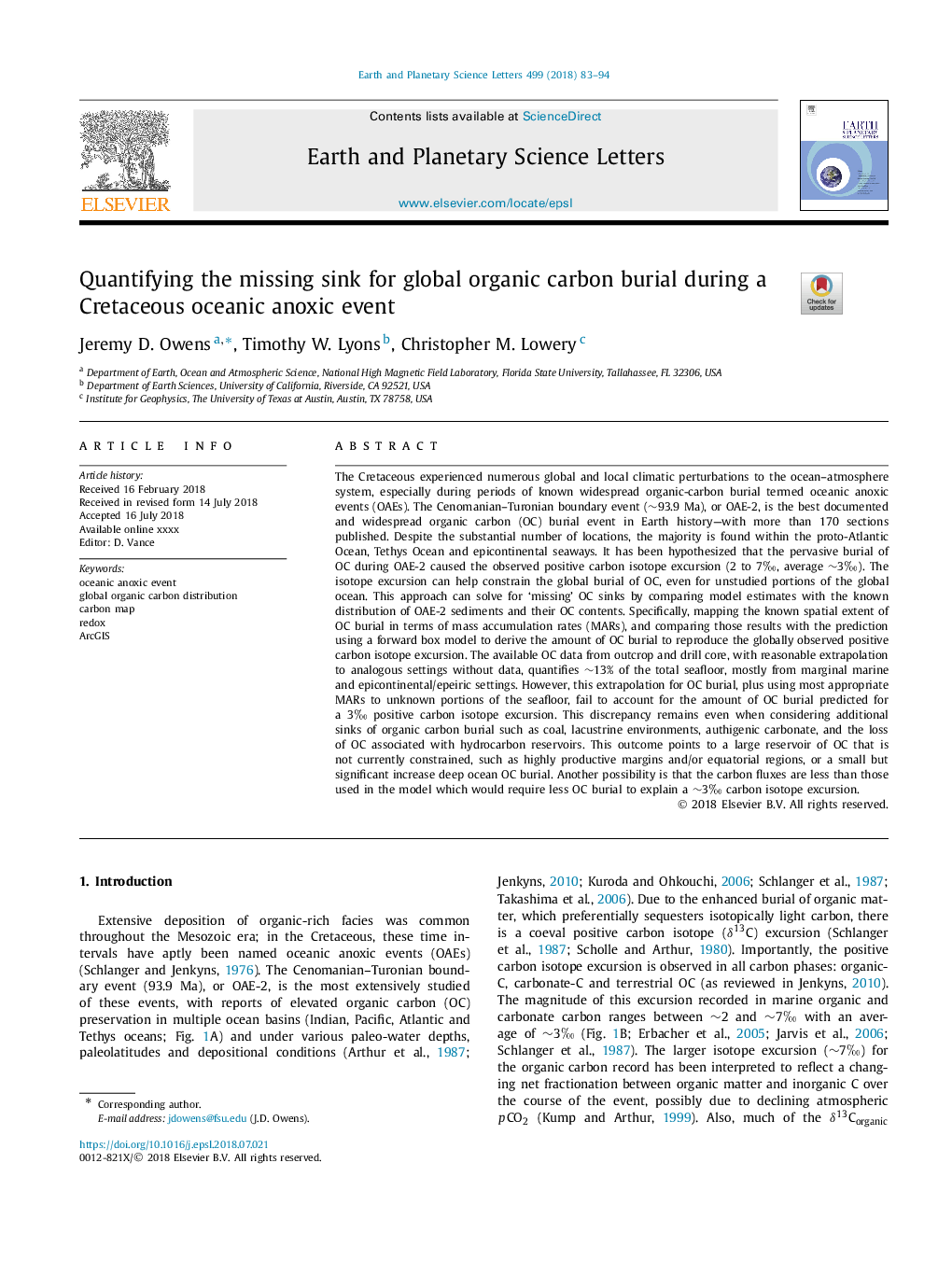| کد مقاله | کد نشریه | سال انتشار | مقاله انگلیسی | نسخه تمام متن |
|---|---|---|---|---|
| 8906681 | 1634657 | 2018 | 12 صفحه PDF | دانلود رایگان |
عنوان انگلیسی مقاله ISI
Quantifying the missing sink for global organic carbon burial during a Cretaceous oceanic anoxic event
دانلود مقاله + سفارش ترجمه
دانلود مقاله ISI انگلیسی
رایگان برای ایرانیان
موضوعات مرتبط
مهندسی و علوم پایه
علوم زمین و سیارات
علوم زمین و سیاره ای (عمومی)
پیش نمایش صفحه اول مقاله

چکیده انگلیسی
The Cretaceous experienced numerous global and local climatic perturbations to the ocean-atmosphere system, especially during periods of known widespread organic-carbon burial termed oceanic anoxic events (OAEs). The Cenomanian-Turonian boundary event (â¼93.9 Ma), or OAE-2, is the best documented and widespread organic carbon (OC) burial event in Earth history-with more than 170 sections published. Despite the substantial number of locations, the majority is found within the proto-Atlantic Ocean, Tethys Ocean and epicontinental seaways. It has been hypothesized that the pervasive burial of OC during OAE-2 caused the observed positive carbon isotope excursion (2 to 7â°, average â¼3â°). The isotope excursion can help constrain the global burial of OC, even for unstudied portions of the global ocean. This approach can solve for 'missing' OC sinks by comparing model estimates with the known distribution of OAE-2 sediments and their OC contents. Specifically, mapping the known spatial extent of OC burial in terms of mass accumulation rates (MARs), and comparing those results with the prediction using a forward box model to derive the amount of OC burial to reproduce the globally observed positive carbon isotope excursion. The available OC data from outcrop and drill core, with reasonable extrapolation to analogous settings without data, quantifies â¼13% of the total seafloor, mostly from marginal marine and epicontinental/epeiric settings. However, this extrapolation for OC burial, plus using most appropriate MARs to unknown portions of the seafloor, fail to account for the amount of OC burial predicted for a 3â° positive carbon isotope excursion. This discrepancy remains even when considering additional sinks of organic carbon burial such as coal, lacustrine environments, authigenic carbonate, and the loss of OC associated with hydrocarbon reservoirs. This outcome points to a large reservoir of OC that is not currently constrained, such as highly productive margins and/or equatorial regions, or a small but significant increase deep ocean OC burial. Another possibility is that the carbon fluxes are less than those used in the model which would require less OC burial to explain a â¼3â° carbon isotope excursion.
ناشر
Database: Elsevier - ScienceDirect (ساینس دایرکت)
Journal: Earth and Planetary Science Letters - Volume 499, 1 October 2018, Pages 83-94
Journal: Earth and Planetary Science Letters - Volume 499, 1 October 2018, Pages 83-94
نویسندگان
Jeremy D. Owens, Timothy W. Lyons, Christopher M. Lowery,